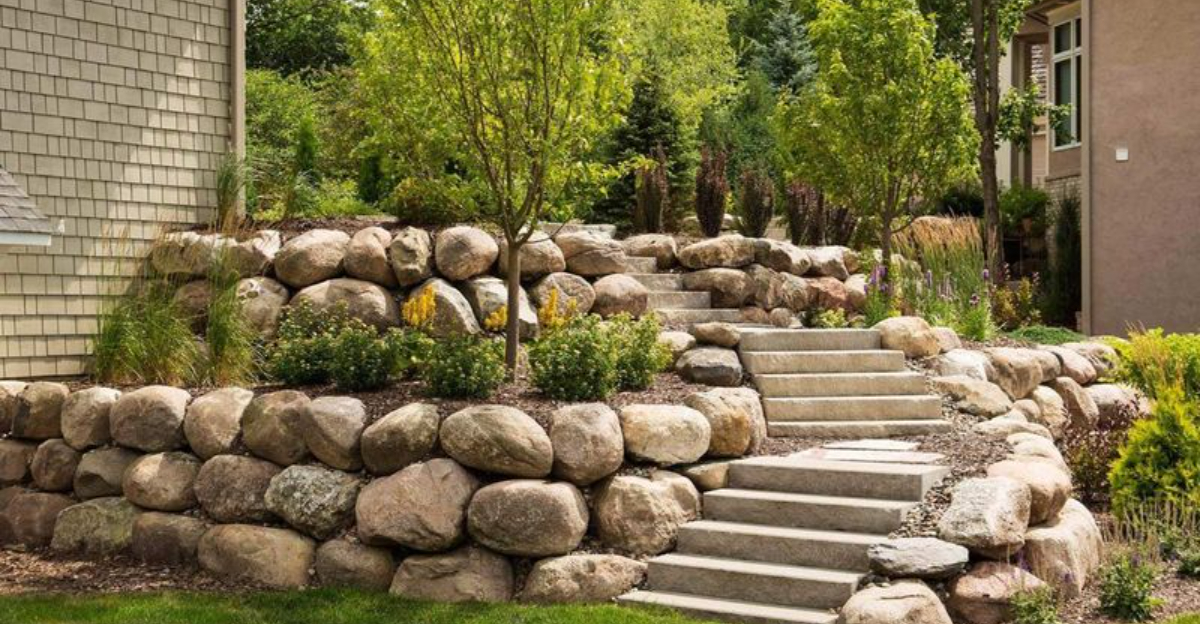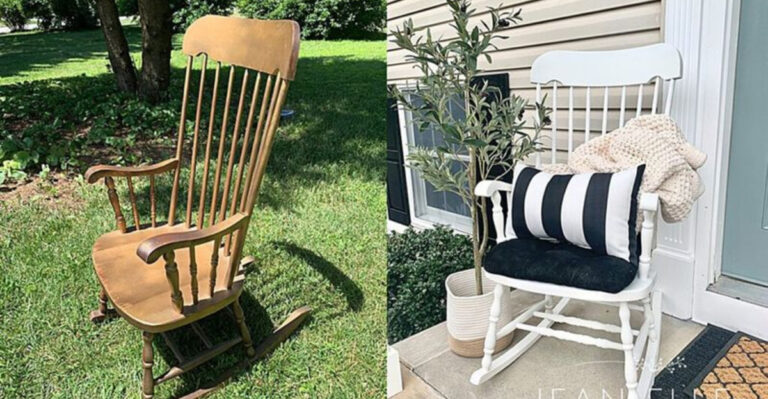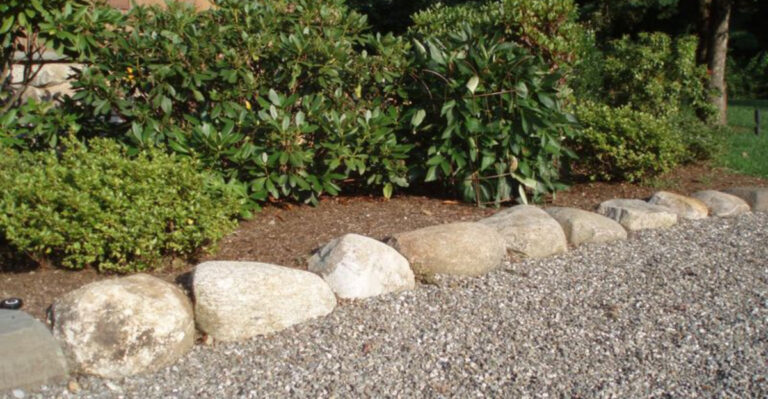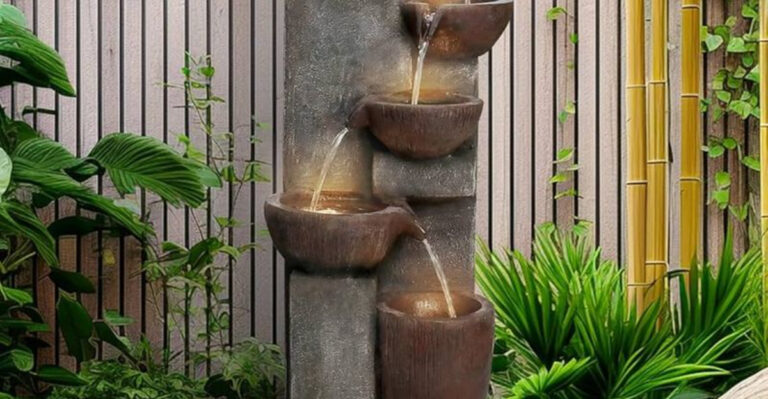17 Retaining Wall Ideas And Designs
I used to think retaining walls were just boring necessities for sloped yards, but wow, was I wrong. Once I started looking into them for my own space, I realized they can totally change the vibe of a yard.
They’re not just about keeping soil in place, they’re about creating levels, texture, and even cozy built-in seating or garden beds. Whether you’re working with a tricky slope or just want to add more visual interest, the right retaining wall can do wonders.
These clever ideas combine function with serious style, and honestly, they’ve got me rethinking my entire backyard layout.
1. Gabion Stone Cages

Wire mesh containers filled with rocks create an industrial-chic look that’s gaining popularity in modern landscapes. The beauty lies in their simplicity—no mortar needed!
These breathable structures allow water drainage while preventing soil erosion. Plus, you can fill them with whatever rocks match your aesthetic, from smooth river stones to jagged quarry pieces.
Bonus: gabions often cost less than traditional masonry walls and can be DIY-friendly for the ambitious homeowner.
2. Timber Terraces
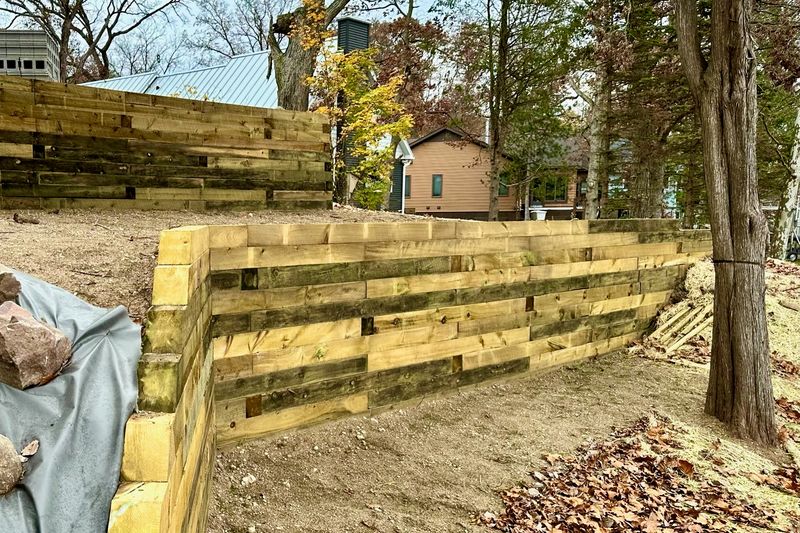
Nothing says rustic charm like pressure-treated logs stacked to create natural-looking terraces. These wooden wonders warm up any landscape with their earthy tones and texture.
Railroad ties or landscape timbers can be arranged in straight lines or gentle curves, adapting to your yard’s contours. The wood eventually weathers to a gorgeous silver-gray that blends with the surroundings.
For longer life, choose cedar or redwood, which naturally resist rot and insects.
3. Stacked Stone Art

Channel your inner sculptor with dry-stacked stone walls that look like they’ve stood for centuries. No mortar means these walls flex slightly with ground movement, often outlasting their rigid counterparts.
The irregular shapes create fascinating shadow patterns throughout the day. Tuck small plants into crevices for a wall that seems to grow right out of the landscape.
While labor-intensive, the result is worth it—a one-of-a-kind structure that feels handcrafted and timeless.
4. Concrete Block Patterns
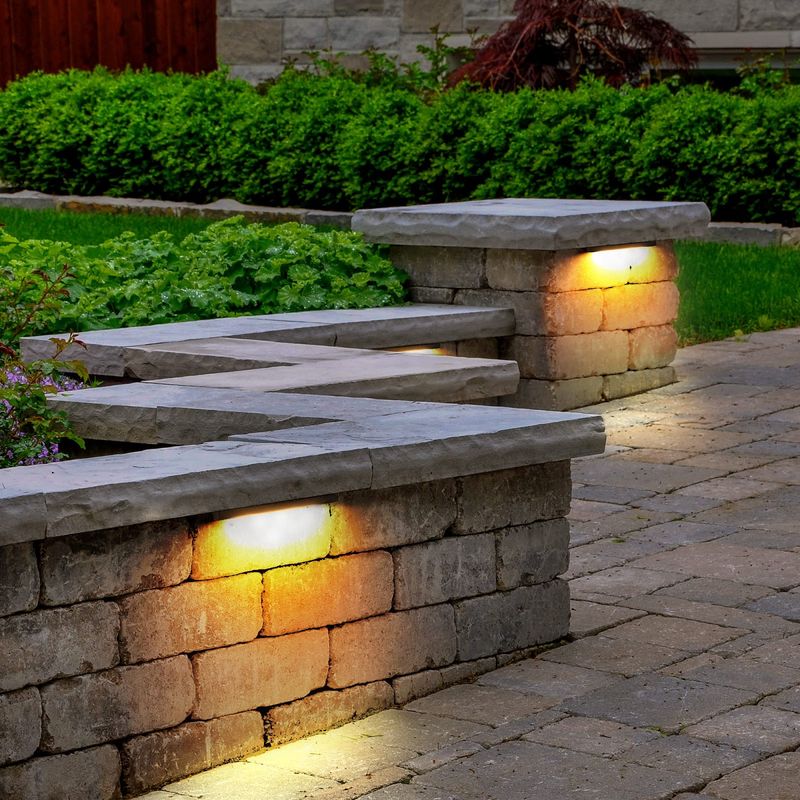
Forget boring gray blocks! Modern concrete units come in textured faces, multiple colors, and interlocking designs that eliminate the need for mortar.
Some systems lean back slightly into the hill for extra stability. You can arrange them in geometric patterns or random mosaics for visual interest.
Many manufacturers offer blocks with built-in lighting options too—imagine your wall gently glowing at night, highlighting your landscape’s best features!
5. Living Green Walls
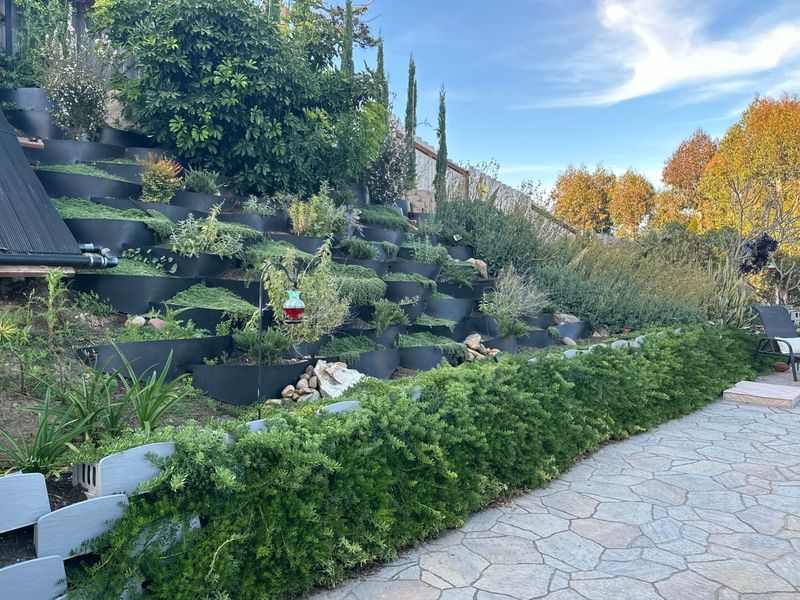
Why build a wall when you can grow one? Specialized systems allow plants to become the actual structure, with roots binding soil together. The result? A lush, breathing barrier that changes with the seasons.
Hardy groundcovers like sedum, creeping thyme, or ivy create a tapestry of textures and colors. Some systems use mesh bags filled with soil, while others employ stacked planting pockets.
These green champions reduce runoff, provide habitat for beneficial insects, and cool the surrounding area.
6. Curved Brick Beauties
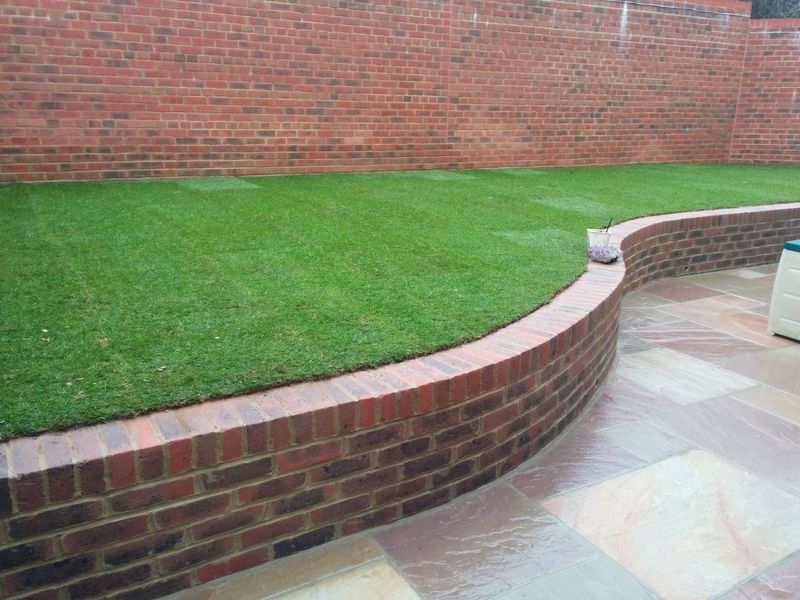
Bricks aren’t just for houses! When arranged in graceful curves, these humble clay blocks create walls with movement and flow. The gentle arcs actually strengthen the structure while softening the landscape.
Mix brick colors for a patchwork effect or stick with one shade for classic elegance. Special radius bricks make smooth curves possible without awkward angles.
For extra personality, consider a decorative cap or inset medallions of contrasting materials like ceramic tiles or river stones.
7. Recycled Material Marvels

Old becomes new again when you repurpose materials like broken concrete (urbanites), glass bottles, or salvaged stone. These eco-friendly options keep waste out of landfills while creating conversation-starting walls.
Broken concrete chunks can be stacked like puzzle pieces, with soil-filled gaps for planting. Glass bottles embedded in mortar create magical light patterns when the sun shines through.
Look for materials with history—old street pavers or stones from demolished buildings add character no new product can match.
8. Tiered Garden Stages

Turn a slope into a showcase with multiple short walls creating plant-filled terraces. Each level becomes its own garden stage, perfect for displaying different plant collections.
Keep walls under 2 feet tall to avoid permit requirements in many areas. The stepped approach reduces the load on each individual wall, making construction simpler.
Use the different microclimates created (sunny upper tiers, shadier lower ones) to grow a wider variety of plants than a flat yard could support.
9. Sleek Poured Concrete
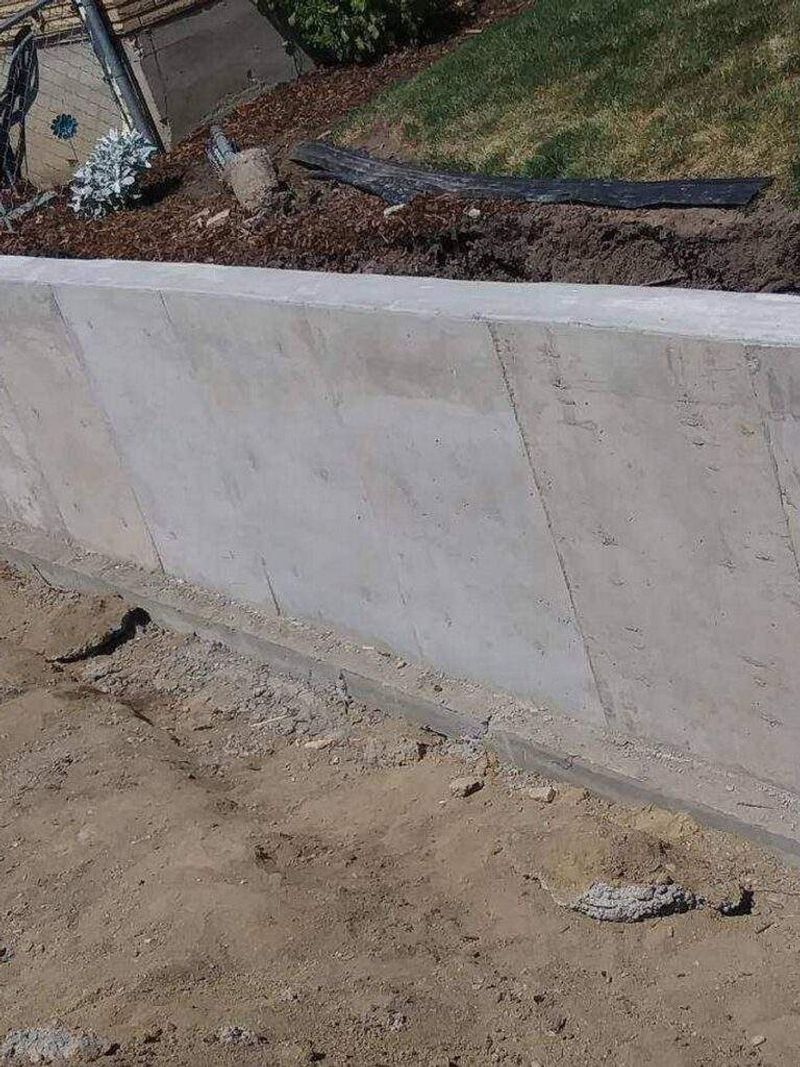
Clean lines and smooth surfaces make poured concrete walls the minimalist’s dream. These monolithic structures can be colored, stamped, or left bare for industrial appeal.
Form liners create textures from wood grain to stone patterns without the maintenance natural materials require. Consider adding reveals (horizontal grooves) to break up tall walls visually.
For a truly custom touch, embed objects like river stones, glass chunks, or even LED lights into the wet concrete before it sets.
10. Boulder Boundaries

Mother Nature’s building blocks make impressive retaining structures! Massive boulders carefully placed by machinery create instant age and permanence in your landscape.
Look for stones with at least one flat side for stability. The spaces between rocks become perfect planting pockets for cascading groundcovers or hardy succulents.
While initially expensive due to heavy equipment needs, boulder walls require zero maintenance and only look better as they weather and age.
11. Corten Steel Edges
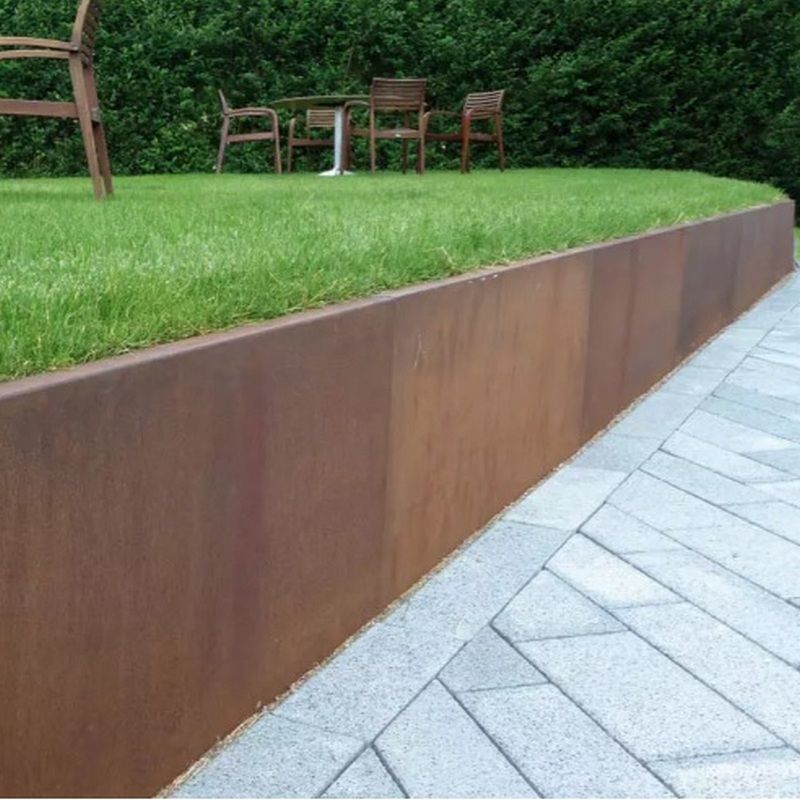
Rust has never looked so good! Weathering steel (often called Corten) develops a stable rust patina that protects the metal while creating a striking reddish-brown finish.
These thin sheets can be bent into curves or kept straight for a contemporary edge. The warm color contrasts beautifully with green plants and light-colored hardscaping.
Since the steel plates are relatively thin, they work best for walls under 3 feet tall or with proper reinforcement for taller applications.
12. Mixed Material Magic
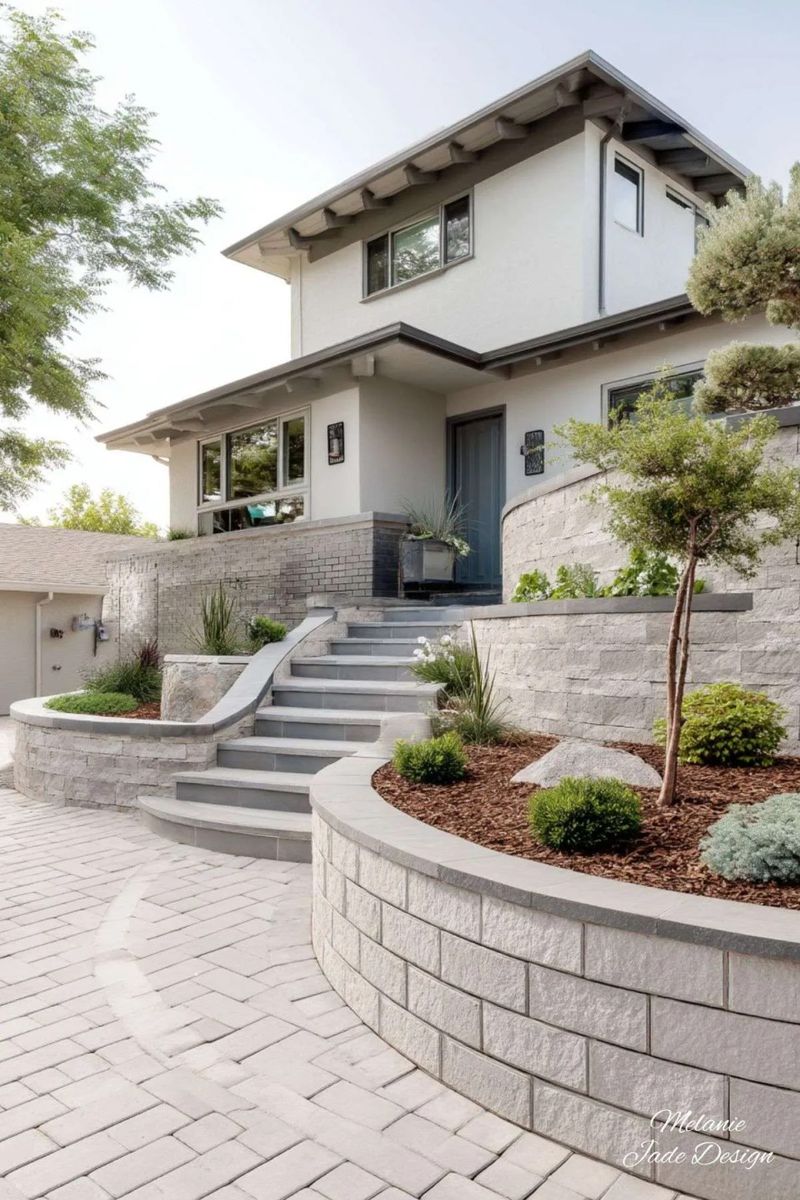
Why choose just one material when you can combine several? Mixing stone with wood, concrete with metal, or brick with glass creates textural interest that single-material walls can’t match.
Consider using different materials for the wall face versus the cap or accent bands. Think wood posts with wire mesh panels filled with stones, or concrete blocks with metal edging.
Just ensure all materials can handle outdoor conditions equally well to avoid sections aging at different rates.
13. Night-Lit Niches

Transform your wall into evening entertainment by incorporating built-in lighting and display spaces. Recessed areas can showcase sculpture, potted plants, or decorative objects.
Low-voltage LED strips tucked under caps or inside niches create dramatic shadows and highlights. Some wall systems even include hollow sections specifically designed for running electrical conduit.
For extra functionality, consider building in seating areas or outdoor speakers disguised within the wall structure.
14. Water Feature Walls
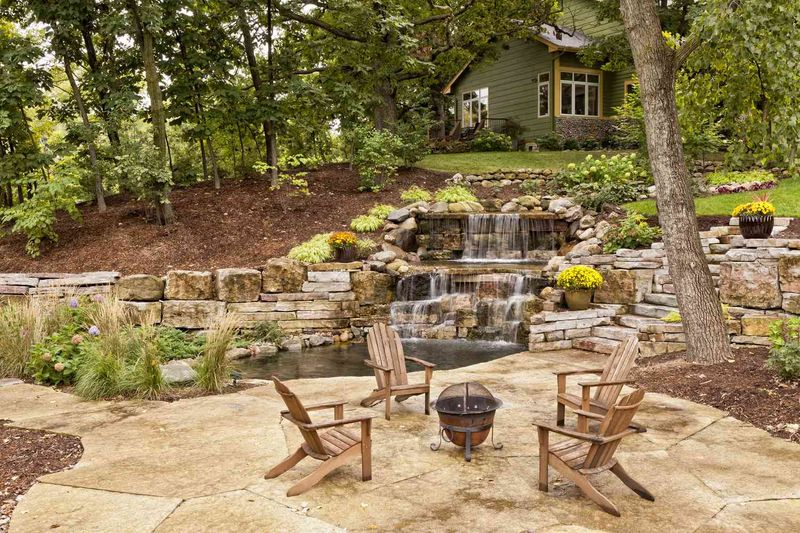
Make your retaining wall do double duty by incorporating flowing water. Sheet falls cascading over stone or concrete create soothing sounds and cooling effects during hot weather.
Hidden pumps recirculate water through concealed pipes, emerging from decorative spouts or natural-looking rock formations. The moving water catches light and adds a dynamic element to an otherwise static structure.
For low maintenance, consider a pondless design where water disappears into a gravel basin rather than collecting in an open pool.
15. Mosaic Masterpieces

Let your artistic side shine with decorative tile work or stone mosaics incorporated into wall faces. From simple geometric patterns to elaborate pictorial scenes, these additions turn functional walls into outdoor galleries.
Weather-resistant glass tiles catch sunlight like jewels. For a cohesive look, pull colors from your home’s exterior or surrounding landscape.
Start small with a decorative band or medallion if a full mosaic seems overwhelming—even small artistic touches make standard walls stand out.
16. Stepped Seating Solutions
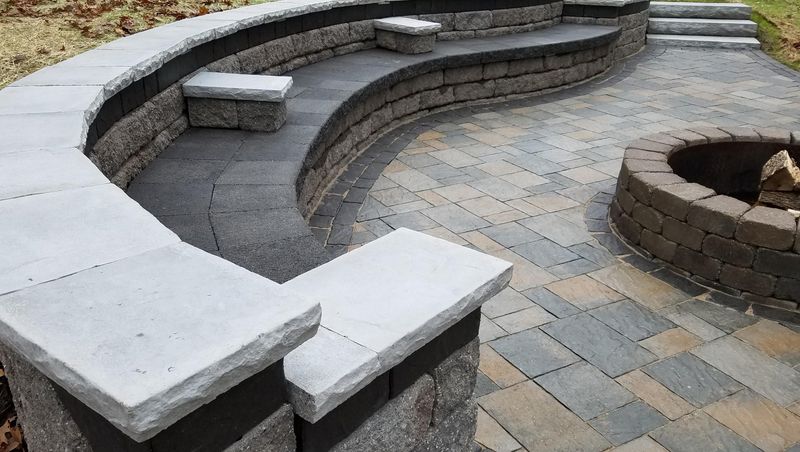
Why build separate seating when your retaining wall can provide places to perch? Wide caps or stepped designs create natural benches for outdoor gatherings.
Add comfort with weather-resistant cushions in colors that complement your landscaping. For evening use, incorporate subtle lighting under steps or along edges for safety and ambiance.
The most successful seating walls stand about 18-24 inches high—the perfect height for the average adult to sit comfortably.
17. Pocket Garden Platforms
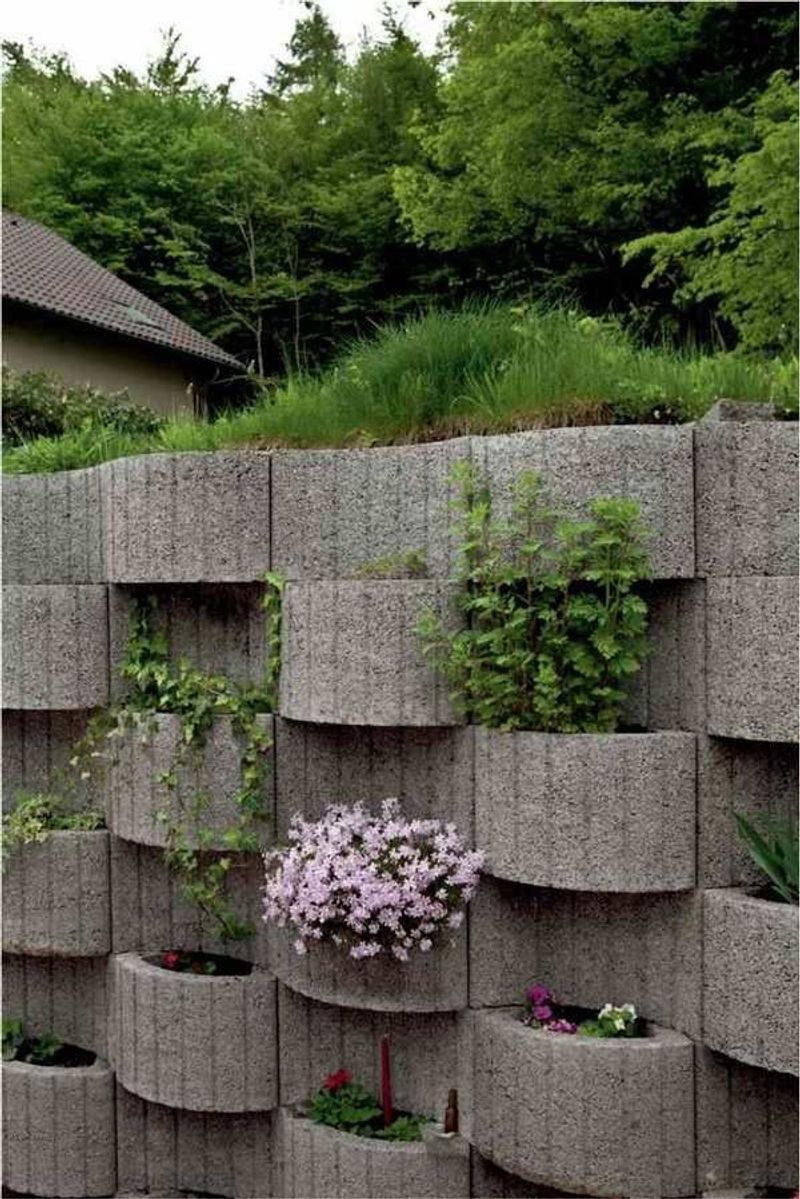
Turn your wall into a vertical garden by incorporating planting pockets right into the structure. Special blocks with open centers or walls built with periodic recesses create ready-made planters.
Fill these spaces with cascading flowers, herbs, or even strawberries for a wall that produces food! Choose plants with similar water needs for easier maintenance.
For areas with limited ground space, these living walls maximize growing area while still providing the structural support of a traditional retaining wall.

